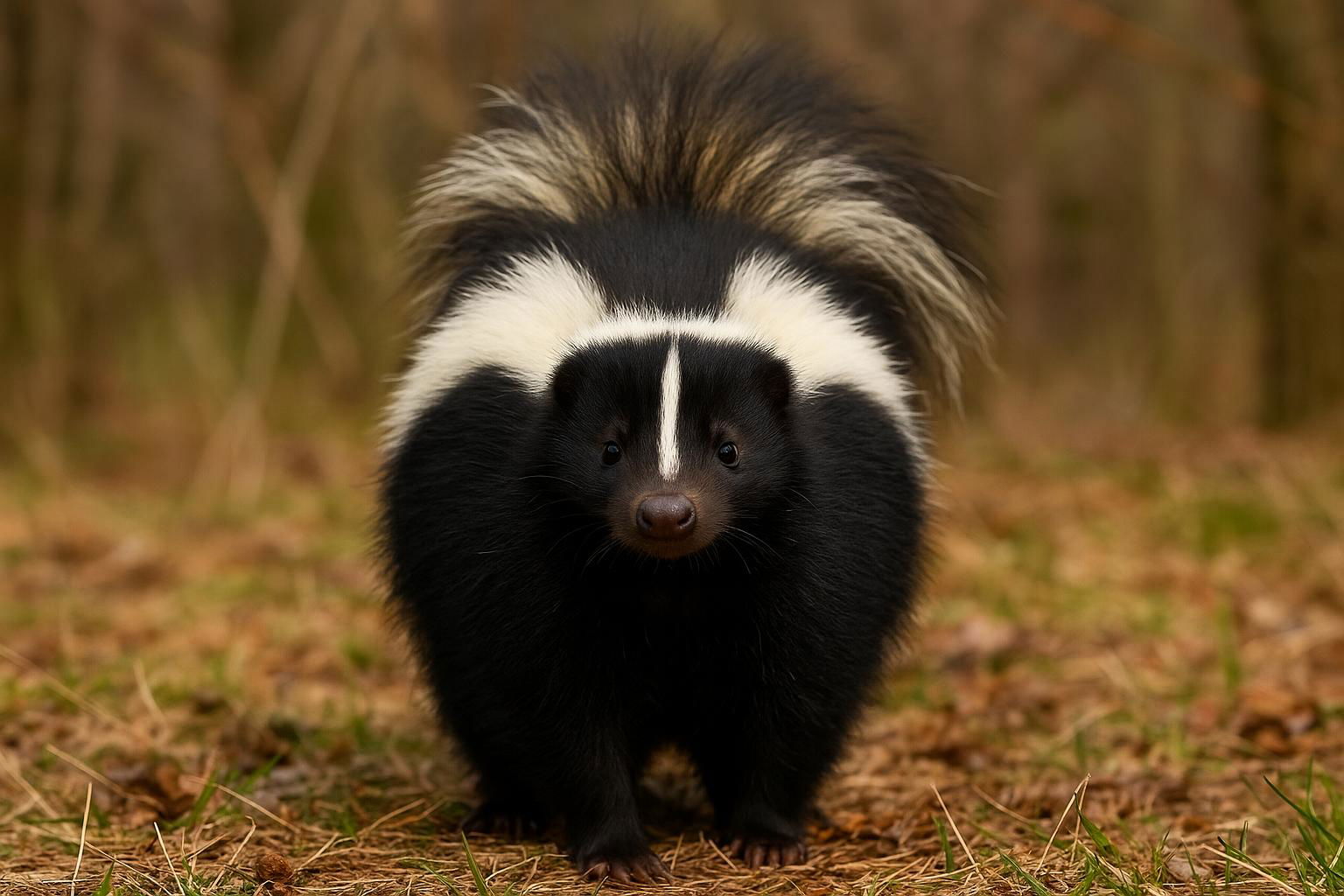
Striped Skunk
Mephitis mephitis
The striped skunk, scientifically known as Mephitis mephitis, is a distinctive member of the mustelid family, widely recognized for its striking black and white coloration and its powerful defensive capabilities. Renowned for its bold striped pattern, this medium-sized mammal has a small head, short legs, and sturdy body, typically measuring between 50 and 80 centimeters in length, including its bushy tail. Native to North America, the striped skunk inhabits a variety of landscapes ranging from open woodlands and grasslands to suburban areas.
Primarily nocturnal, these solitary creatures are omnivorous opportunists, feeding on a diverse diet that includes insects, small mammals, fruits, and other plant matter. Their well-developed sense of smell compensates for their poor eyesight, guiding them to food and helping them avoid predators. However, their most famous defense mechanism is a potent spray of noxious chemicals, produced in anal glands, which can deter and disorient potential threats from a considerable distance.
Despite their reputation, striped skunks are beneficial to ecosystems as they help control insect and rodent populations. Their playful demeanor and striking appearance have also made them a subject of intrigue and affection among wildlife enthusiasts. Skunks give birth in late spring, with females typically raising litters of four to six kits that are weaned by two months of age.
While the striped skunk is adaptable and currently not considered a threatened species, it faces risks from habitat loss and traffic mortality. Conservation efforts focus on educating the public about living harmoniously with these misunderstood yet invaluable animals.

 All Species & Breeds
All Species & Breeds
 Highland Cattle
Highland Cattle
 Miniature Donkeys
Miniature Donkeys
 All Species Directory
All Species Directory
 Highland Cattle in Virginia
Highland Cattle in Virginia
 Miniature Donkeys in Texas
Miniature Donkeys in Texas












